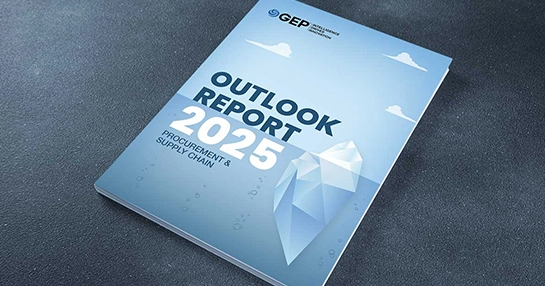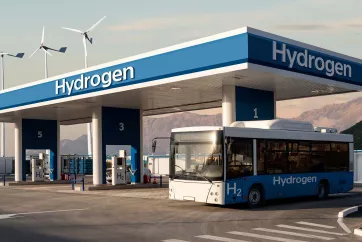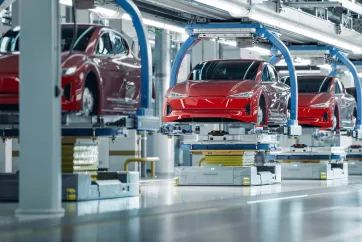From Carbon Tracking to Decarbonization: AI’s Role in Sustainable Supply Chains
- AI can drive sustainability in procurement and supply chains by streamlining Scope 3 emission tracking, enhancing supplier collaboration and supporting decarbonization.
- The rise of green energy demand for AI data centers creates a paradox, prompting companies to balance environmental and operational goals.
- Working with suppliers using AI tools can help businesses achieve net-zero goals while fostering transparency and compliance.
February 12, 2025 | Supply Chain Strategy
Sustainability has emerged as a non-negotiable priority for enterprises – especially for procurement and supply chain leaders tasked with executing sustainability goals.
As businesses strive to meet ambitious decarbonization targets, how can the latest AI tools drive progress toward those objectives?
Those in the tech industry hail AI as a driver of efficiency and innovation, but it’s not without its sustainability challenges.
With the surge in AI adoption, the demand for energy to power massive data centers is also skyrocketing, with the International Energy Agency estimating that electricity consumption from data centers and AI could double by 2026.
However, the same technology that contributes to energy demand also holds the key to helping businesses decarbonize their operations.
AI-Powered Emission Tracking
One of AI’s most promising applications in sustainability is its ability to provide transparency across the supply chain.
Tracking emissions, once a manual and error-prone process, is now more accurate and efficient, with AI-driven solutions that can ingest and analyze the vast quantities of data produced by today’s supply chains and provide recommended actions on how to lower sustainability-related risks.
For example, AI-powered sustainability platforms can crunch data from every stage of your supply chain—calculating greenhouse gas emissions, identifying carbon hotspots and flagging non-compliance in real-time. AI tools like these empower companies to pinpoint where their greatest environmental impact lies and work with suppliers to take corrective action and improve resilience.
AI-driven carbon accounting can also help businesses stay ahead of regulatory changes. With legislation like the EU’s Corporate Sustainability Reporting Directive (CSRD) demanding detailed emission reports, having AI as a compliance ally is a necessity.
Decarbonizing Supply Chains With Supplier Collaboration
Achieving net-zero targets requires robust collaboration with suppliers. By analyzing supplier data, AI platforms can evaluate sustainability metrics, rank suppliers based on carbon performance and recommend greener alternatives.
AI tools can help procurement and supply chain teams simulate supplier combinations to determine which mix yields the lowest emissions without compromising cost or efficiency.
Additionally, they enable companies to monitor suppliers’ adherence to sustainability standards, fostering accountability and trust.
Beyond evaluation, AI can also support decarbonization initiatives by modeling the environmental benefits of shifting to low-carbon materials or adopting circular economy practices. These insights enable procurement leaders to make informed decisions that align with their sustainability objectives.
The Paradox of Green Energy and AI’s Growth
AI tools can be a game-changer for sustainability, but that performance comes at a cost.
Running complex algorithms requires vast computational power, which in turn fuels energy consumption. According to estimates, AI-related data centers account for 1% of global energy use—a figure that is sure to rise as AI adoption continues to scale.
To mitigate this impact, businesses are turning to renewable energy sources to power their AI operations. Tech giants like Google and Microsoft are committing to sourcing 100% renewable energy for their data centers. But the procurement and supply chain sectors must also step up by ensuring the energy-intensive AI systems they deploy align with broader sustainability goals.
The good news? AI itself can be a tool for optimizing energy use. Through predictive analytics, companies can manage energy loads more efficiently, integrating renewable sources like wind and solar while minimizing waste.
Turning Challenges Into Opportunities
While the energy demands of AI technologies pose a paradox, they are also driving innovation in green energy procurement and efficiency optimization. Similarly, while tracking and decarbonizing emissions may seem daunting, AI offers the tools to help enterprises simplify and streamline these processes.
For procurement, the imperative is clear: embrace AI not just as a tool for efficiency but as a partner in sustainability. In the end, AI is both a driver of change and a challenge to overcome in the pursuit of sustainable procurement. The key lies in leveraging its potential thoughtfully, ensuring that its benefits outweigh its environmental costs.
Click here to learn more about GEP’s AI-powered sustainability platform GEP GREEN and transform your approach to tracking ESG performance.



